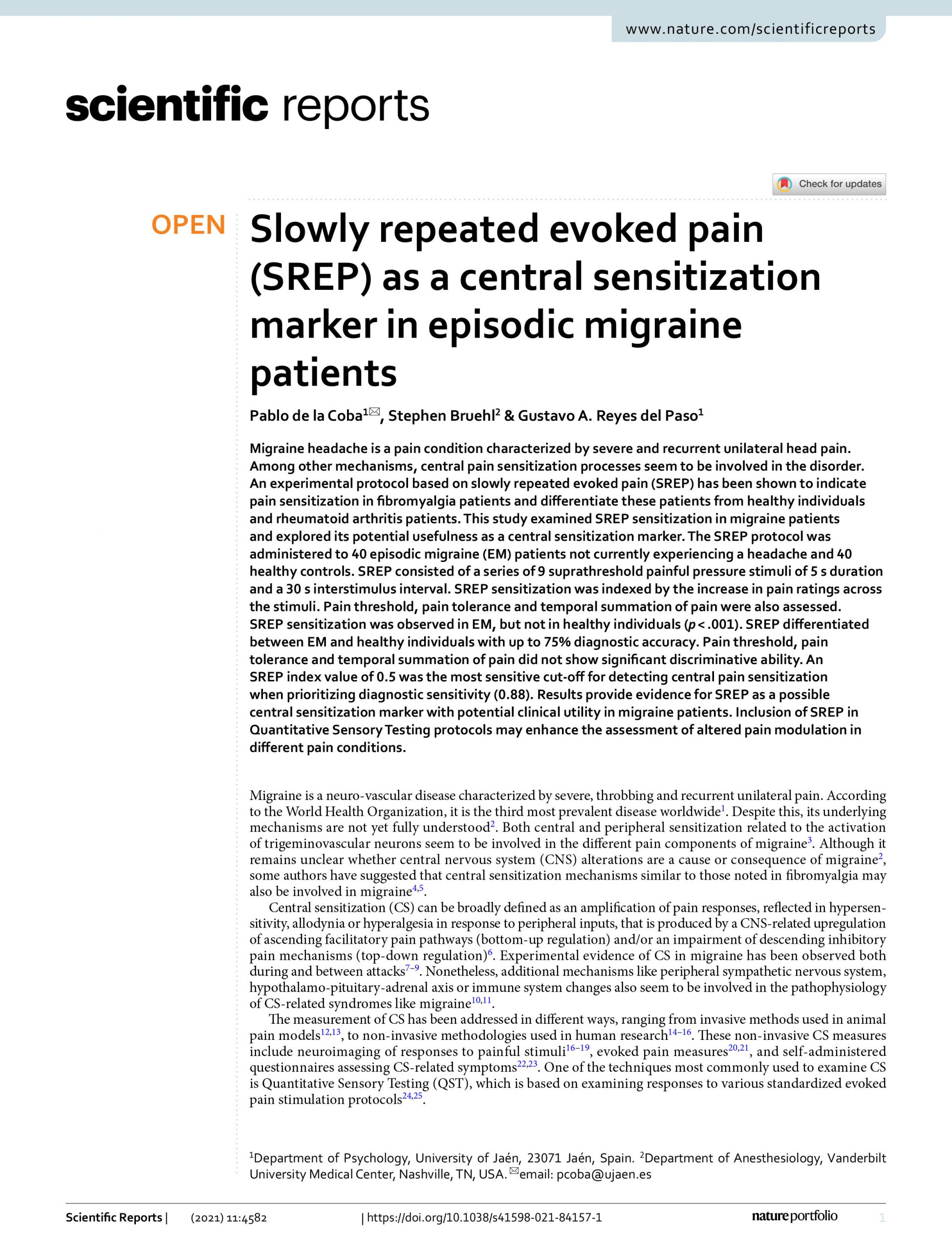
Slowly repeated evoked pain (SREP) as a central sensitization marker in episodic migraine patients.
Autor: De la Coba, P., Bruehl, S., & Del Paso, G. Category: Investigación Publisher: Scientific reports, 11(1), 4582. Publicada: 25/02/2021 Etiquetas: Central Sensitization | Marker | Neurología | Pain | Reumatología | SREP | Unidad del Dolor More DetailsAbstract
Migraine headache is a pain condition characterized by severe and recurrent unilateral head pain. Among other mechanisms, central pain sensitization processes seem to be involved in the disorder. An experimental protocol based on slowly repeated evoked pain (SREP) has been shown to indicate pain sensitization in fibromyalgia patients and differentiate these patients from healthy individuals and rheumatoid arthritis patients. This study examined SREP sensitization in migraine patients and explored its potential usefulness as a central sensitization marker. The SREP protocol was administered to 40 episodic migraine (EM) patients not currently experiencing a headache and 40 healthy controls. SREP consisted of a series of 9 suprathreshold painful pressure stimuli of 5 s duration and a 30 s interstimulus interval. SREP sensitization was indexed by the increase in pain ratings across the stimuli. Pain threshold, pain tolerance and temporal summation of pain were also assessed. SREP sensitization was observed in EM, but not in healthy individuals (p < .001). SREP differentiated between EM and healthy individuals with up to 75% diagnostic accuracy. Pain threshold, pain tolerance and temporal summation of pain did not show significant discriminative ability. An SREP index value of 0.5 was the most sensitive cut-off for detecting central pain sensitization when prioritizing diagnostic sensitivity (0.88). Results provide evidence for SREP as a possible central sensitization marker with potential clinical utility in migraine patients. Inclusion of SREP in Quantitative Sensory Testing protocols may enhance the assessment of altered pain modulation in different pain conditions.
